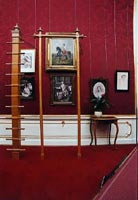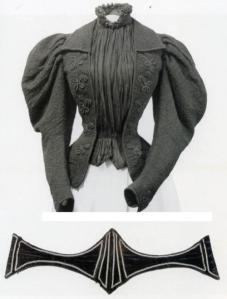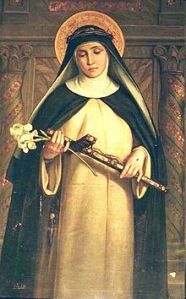Married young into an unhappy royal life, most famous woman of her era, died violently, had an eating disorder. It sounds like Diana, Princess of Wales, and indeed there are many articles on the Internet comparing the two, but this description belongs to Elisabeth, Empress of Austria from 1854 until 1898.
Elisabeth (known from a young age as Sisi) was born on 24th December 1837, in Munich, to Ludovica, from the Bavarian House of Wittelsbach, and Duke Max of Bavaria. A shy child, she was catapulted into the limelight at 16, when she married her cousin, Emperor Franz Joseph of Austria. From the start, Vienna didn’t suit her – she referred to herself as a ‘caged bird’ in its suppressive court, under the watchful and domineering eye of Franz Joseph’s beloved mother, Sophie. Elisabeth bore three children during the 1859s, all of whom were taken away and raised by her mother-in-law. Franz Joseph was unfaithful to her and seems to have given her a venereal disease, treatment for which ruined Elisabeth’s teeth. It’s no wonder that she began to take long, restorative trips away from court.
She was widely regarded as one of the most beautiful women in Europe, and the maintenance of her beauty certainly reads like anorexia. She had no control over her life but she could control the hell out of her food and her beauty regime. As one commenter posted on my earlier piece about nuns: “…[that] sense of control is very satisfying when you are having other issues in your life. Sometimes food is the only thing in this world that you can control”.
Elisabeth ate very little, frequently subjecting herself to starvation diets that consisted of eggs, broth and milk from the cows she took with her wherever she went. She walked for up to 10 hours a day, did rigorous gymnastic routines and went horse-riding, all to retain the (allegedly) 18 inch waist that had, ironically, attracted her husband and condemned her to her miserable life. Her fasting got worse after the death in 1857 of her toddler daughter, and starvation behaviour would reappear following periods of stress for the rest of her life.
In obsessive pursuit of physical immortality she also concocted face masks made out of raw veal or slugs (or strawberries, which is less grim), and devoted a whole day once every three weeks to washing her knee-length hair with eggs and cognac. After the age of 32 she refused to have any more portraits made or pictures taken, so the public would always think of her as young and beautiful.
There is no doubt at all that Elisabeth was desperately unhappy, and this obsessive compulsive dedication to her appearance seems to have been the manifestation of her depression. She refused to get pregnant a fourth time, partly to maintain her waistline, until 1867, when she decided a reconciliation with her husband would help her push Hungary’s cause to become an independent nation. The Dual Monarchy of Austria-Hungary was created that same year, and in 1868 Elisabeth gave birth to Marie Valerie, insisting on bringing this child up herself. Deprived of a close relationship with her other children, she smothered Marie Valerie.
In January 1889 her only son, Crown Prince Rudolf, killed himself in a murder-suicide pact with his teenage mistress. Rudolf, then 30, had been growing increasingly frustrated with his father’s refusal to grant him any responsibility and his own unhappy marriage. Elisabeth, who had lost both her parents and her sister the previous year, was devastated, angry, and terrified that Rudolf’s depression was a family trait that Elisabeth would soon develop. Both her Wittelsbach cousins Ludwig II of Bavaria and his brother Otto had been declared insane – three days after his diagnosis of schizophrenia in 1886, Ludwig and his psychiatrist had been found drowned, officially by suicide.
Elisabeth did not die by her own hand. She was assassinated, in 1898 in Geneva, by an Italian anarchist who stabbed her because he couldn’t find his original intended aristocratic victim. Her corset was so tight that initially no blood could escape from the wound in her heart – when her bodice was loosened, she bled out.
Elisabeth has become an iconic figure – the original beauty in a royal fairytale gone wrong. Because of her political work she has remained especially popular in Hungary, but there are webpages and blogs all over the place dedicated to her beauty secrets and her clothes. She also has her own museum.






